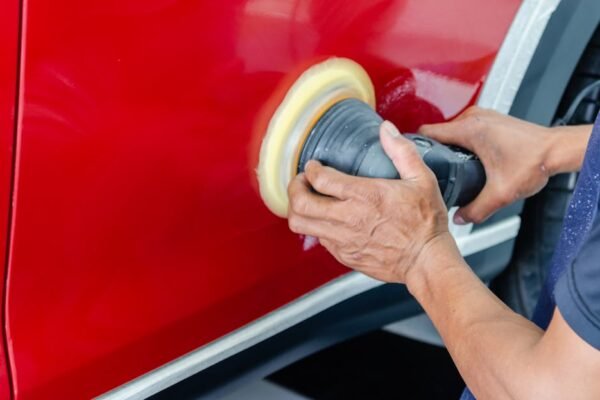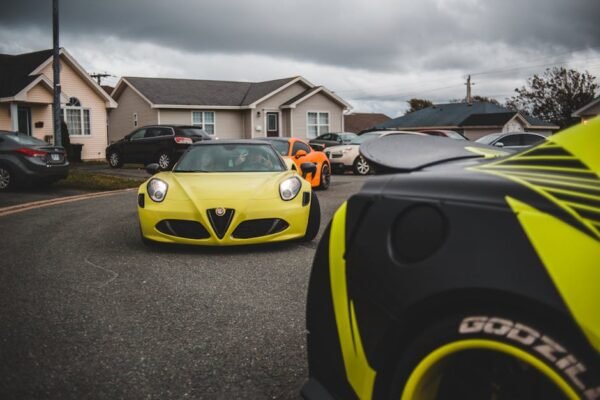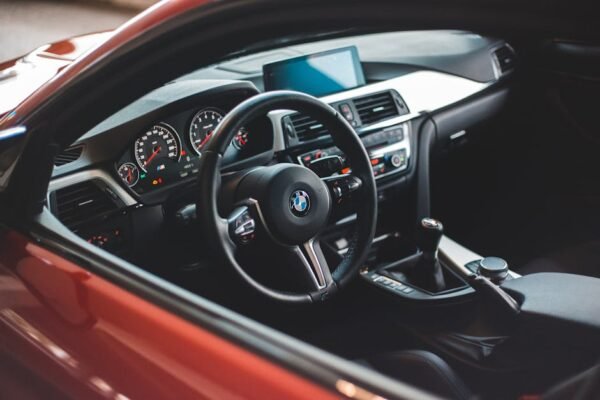The Evolution of American Muscle Cars
{“type”:”img1″,”src”:”https://mostmotors.com/wp-content/uploads/2024/03/fileUpload-49.jpg”,”alt”:”American muscle cars”}The American muscle car is an iconic symbol of raw power and performance that emerged in the 1950s and 1960s. Initially designed for drag racing, these cars were equipped with powerful V8 engines, making them the kings of the road. The muscle car era was marked by models such as the Ford Mustang, Chevrolet Camaro, and Dodge Challenger, each boasting impressive horsepower and torque. This period represented not just an evolution in automotive technology but also a culture that celebrated speed, freedom, and innovation.
Over the years, the definition of what constitutes a muscle car has evolved, but the core principles remain the same. These vehicles are still characterized by their high-performance engines, rear-wheel drive, and distinct, aggressive styling. The muscle car subculture has thrived, adapting to technological advancements while maintaining its rebellious spirit. Today, classic models have become collectors' items, fetching high prices at auctions, while modern interpretations continue to push the boundaries of automotive performance.
The allure of muscle cars goes beyond their physical capabilities; it taps into a deeply rooted American tradition of self-expression and personal freedom. Owning and driving a muscle car is often seen as a statement, a way to stand out from the crowd. This sentiment has contributed to the formation of a passionate and vibrant community of enthusiasts who share a common love for these powerful machines. Through car shows, races, and clubs, the muscle car culture continues to grow, bringing together people from all walks of life.
Furthermore, American muscle cars have made a significant impact on popular culture, appearing in countless movies, TV shows, and songs that celebrate the country's automotive heritage. This widespread visibility has cemented their status as symbols of American ingenuity and the pursuit of performance. Despite the challenges posed by environmental concerns and the shift toward electric vehicles, the muscle car's legacy endures, demonstrating its enduring appeal and significance.
The Role of Subcultures in Preserving Muscle Car Heritage
The muscle car subcultures play a crucial role in preserving the heritage and legacy of these American icons. Clubs and organizations dedicated to specific models or brands have sprung up across the country, serving as custodians of history and tradition. These groups organize events, rallies, and meets where enthusiasts can showcase their prized possessions, share knowledge, and celebrate their passion for muscle cars.
One of the most compelling aspects of these subcultures is their commitment to restoration and customization. Members often spend countless hours meticulously restoring classic models to their original glory or customizing modern versions to enhance their performance and appearance. This dedication not only keeps the muscle car legacy alive but also drives innovation in automotive design and engineering.
Through these subcultures, younger generations are introduced to muscle cars, ensuring that the passion for these vehicles is passed down. Educational initiatives, mentorship programs, and hands-on workshops provide opportunities for learning and engagement. These efforts foster a sense of community and continuity, ensuring that the muscle car culture remains vibrant and inclusive.
Beyond their love for cars, muscle car subcultures are also characterized by their philanthropy and community service. Many clubs organize charity events, fundraising drives, and volunteer activities, leveraging their passion for a greater good. This aspect of the subculture underscores the positive impact that a shared love for muscle cars can have on society at large.
Modern Muscle Cars and the Evolution of Performance
{“type”:”img1″,”src”:”https://mostmotors.com/wp-content/uploads/2024/03/fileUpload-52.jpg”,”alt”:”modern muscle cars”}While classic muscle cars are celebrated for their historic significance, modern muscle cars continue to push the limits of automotive performance. Manufacturers are leveraging advancements in technology to create vehicles that are faster, more efficient, and more technologically advanced than ever before. Today's muscle cars feature cutting-edge engine technology, improved aerodynamics, and sophisticated electronic systems that enhance driving dynamics and safety.
The introduction of electric and hybrid models is a testament to the muscle car's adaptability. These new variants offer an unbeatable combination of power, efficiency, and environmental friendliness, appealing to a wider audience. Electric muscle cars, such as the Ford Mustang Mach-E and the Tesla Model S, are challenging traditional notions of performance, offering instant torque and impressive acceleration without sacrificing the muscle car's characteristic roar and excitement.
The ongoing commitment of manufacturers to innovation ensures that the spirit of the muscle car will continue to thrive in the 21st century. By embracing new technologies and reimagining what a muscle car can be, the industry is keeping the flame alive for enthusiasts and attracting a new generation of fans. The future of muscle cars looks promising, with possibilities for further advancements and breakthroughs that will redefine performance and passion on the road.
In conclusion, the American muscle car subcultures represent a rich tapestry of history, innovation, and community. These vehicles embody the spirit of American ingenuity and the pursuit of performance, playing a pivotal role in the nation's automotive culture. As we look to the future, the muscle car's legacy is secure, thanks to the enthusiasts who cherish these machines and the manufacturers who continue to innovate. The road ahead is exciting, and the journey is just getting started.





